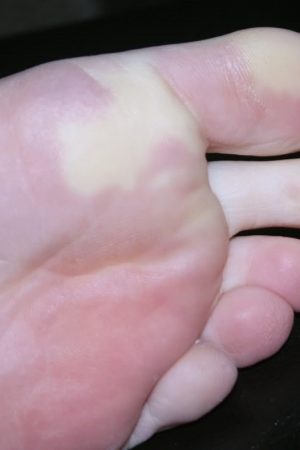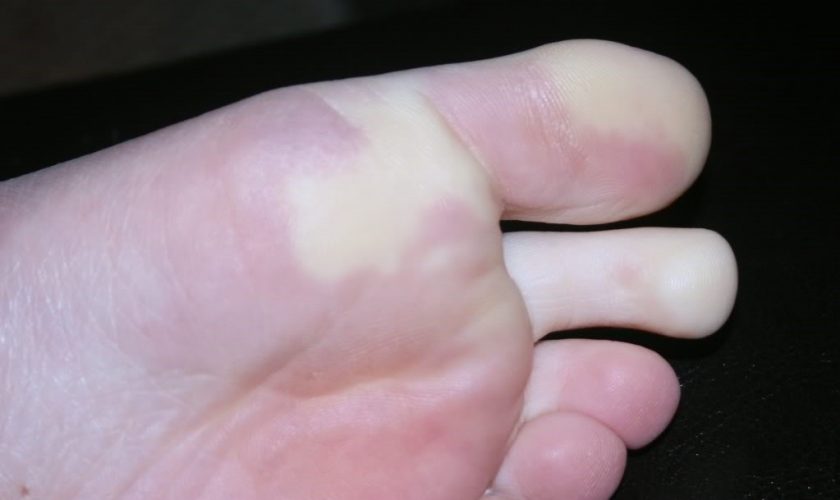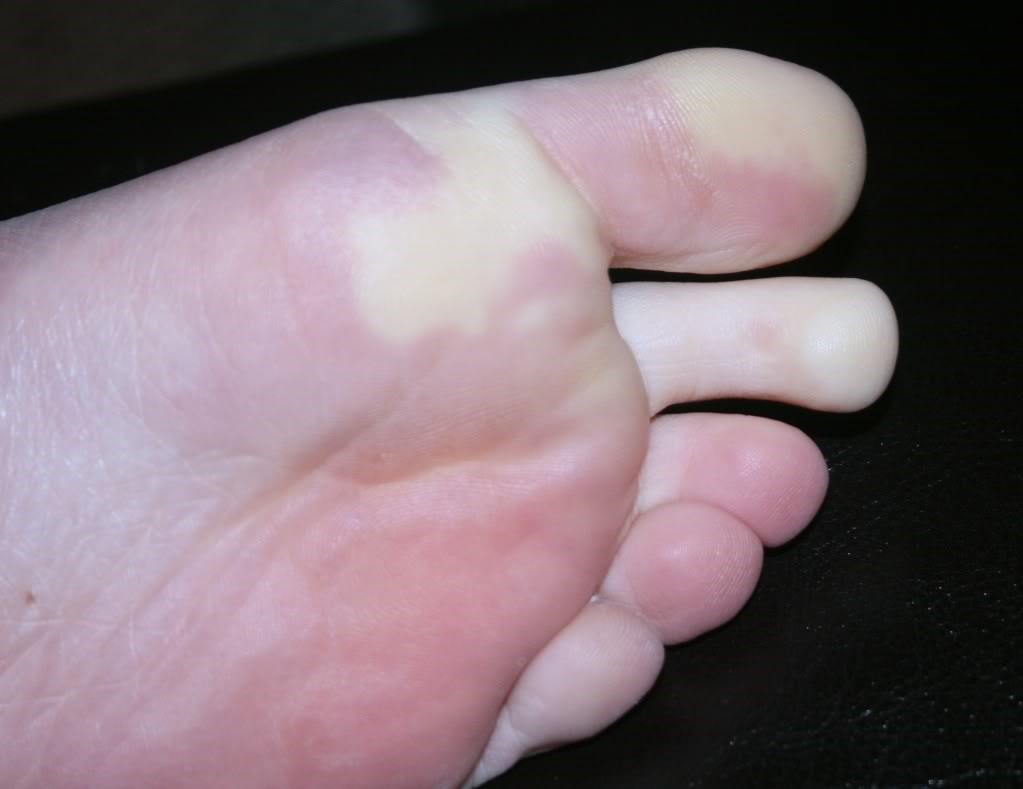Chilblains (sometimes called pernio) are small, itchy, painful, red swellings on the skin. Chilblains are caused by an abnormal skin reaction to cold. They tend to occur on ‘extremities’ that easily become cold. That is, your toes, fingers, nose and earlobes. However, other areas of skin sometimes develop chilblains when they become cold. For example, your heels, lower legs and thighs (especially in horse riders).
Symptoms
Signs and symptoms of chilblains may include:
- Small, itchy red areas on your skin, often on your feet or hands
- Possible blistering or skin ulcers
- Swelling of your skin
- Burning sensation on your skin
- Changes in skin color from red to dark blue, accompanied by pain
Causes
Chilblains occur several hours after exposure to the cold. Cold causes constriction of the small arteries and veins in the skin. The chilblains are sometimes aggravated by sun exposure, because rewarming results in leakage of blood into the tissues and swelling of the skin.
Chilblains are less common in countries where the cold is more extreme because the air is drier and people have specially designed living conditions and clothing.
Chilblains are more likely to develop in those with poor peripheral circulation, noted by blue-red mottled skin on the limbs (acrocyanosis).
Contributing factors
Other factors contributing to chilblains include:
- Familial tendency to chilblains
- Peripheral vascular disease, due to diabetes, smoking, hyperlipidaemia
- Low body weight, or malnutrition, eg anorexia nervosa
- Hormonal changes: chilblains can improve during pregnancy
- Connective tissue disease, particularly lupus erythematosus (chilblain lupus), or, in association with Raynaud phenomenon, systemic sclerosis.
- Bone marrow disorders
When to see a doctor
Chilblains will usually get better on their own. Seek medical care to check for complications if the pain is unusually severe, if you suspect an infection, or if your symptoms aren’t improving after one to two weeks. If the symptoms extend into the warm season, see a doctor to rule out other conditions.
If you have diabetes or poor circulation, healing may be impaired. Be cautious and seek care.
Prevention
Keeping your entire body warm at all times is the key to preventing chilblains. Suggestions include:
- Avoid long periods of exposure to cold or damp weather.
- Wear several layers of clothing, which trap body heat more efficiently than one bulky layer.
- Wear several layers of clothing.
- Make sure your shoes are comfortable and well fitted.
- Dry feet thoroughly after showering or bathing.
- Use woollen or cotton socks to allow your feet to ‘breathe’.
- Have some gentle exercise, like walking, every day to improve peripheral circulation.
- See a podiatrist for regular professional treatments.
Remedies
Lemon Juice
Extract the juice of one-half lemon and rub this on affected fingers or toes.
Aloe Vera
Aloe vera has anti-inflammatory as well as healing properties that can help treat chilblains. It can help soothe inflammation, reduce pain and eliminate other discomforts.
Potato
Sprinkle some salt on a slice of potato and rub this on affected skin.
Turnip
Turnip is known to cure chilblains completely. Just soak affected areas for a few minutes in two liters of boiled water with finely chopped turnips. You can also rub freshly chopped turnips to the affected skin to heal the swelling.
Black Peppercorn
Black peppercorns are also useful in the treatment of chilblains. They have anti-inflammatory properties that help reduce inflammation, swelling and pain.
Increase Calcium Intake
It has been found that calcium deficiency can make a person more vulnerable to chilblains. If you have a history of suffering from chilblains during the winter, you may be able to prevent it by increasing your calcium intake.
Exercise Regularly
Poor blood circulation can make you more susceptible to chilblains. To overcome this risk factor, exercise regularly.
Exercise can improve blood circulation to all parts of the body. But before starting any exercise, make sure to warm up gradually with simple foot exercises to get the blood circulating.



